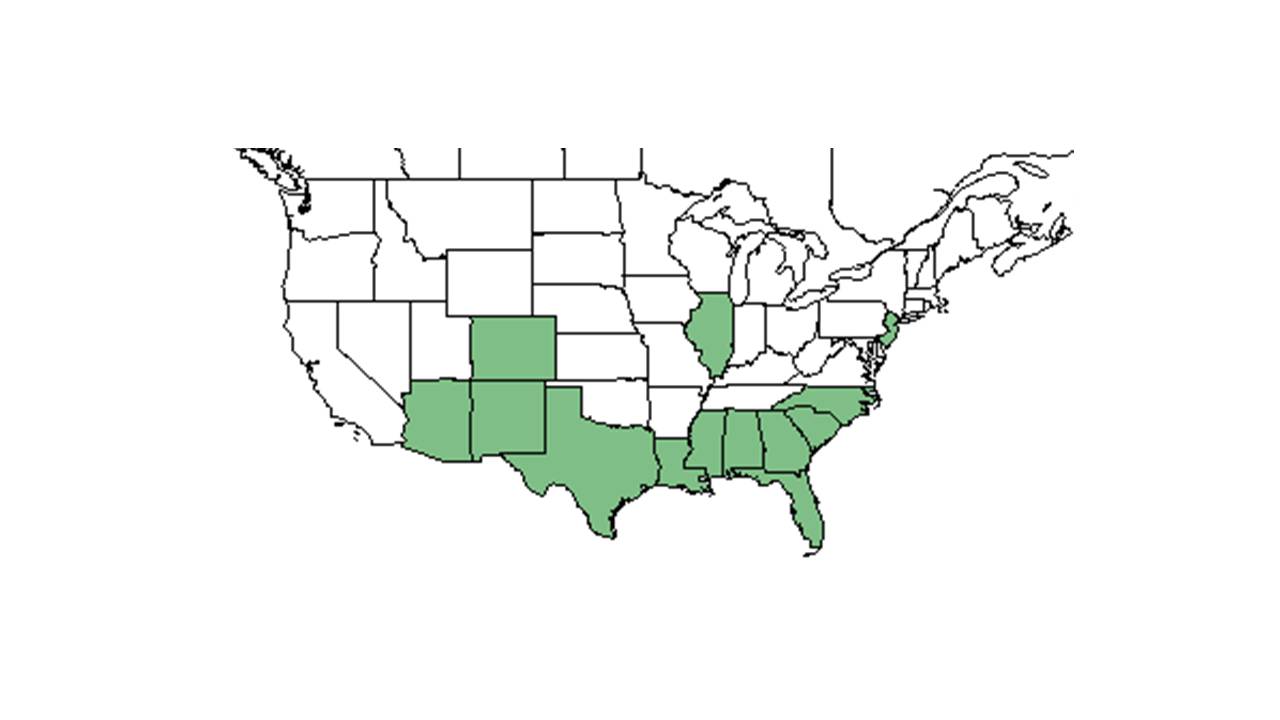Difference between revisions of "Lactuca graminifolia"
| Line 24: | Line 24: | ||
==Ecology== | ==Ecology== | ||
===Habitat=== <!--Natural communities, human disturbed habitats, topography, hydrology, soils, light, fire regime requirements for removal of competition, etc.--> | ===Habitat=== <!--Natural communities, human disturbed habitats, topography, hydrology, soils, light, fire regime requirements for removal of competition, etc.--> | ||
| + | |||
| + | This species is found in pine flatwoods, evergreen scrub oak sand ridges, fallow fields, bordering swamps, and longleaf pine-wiregrass pinelands (FSU Herbarium). Also found in disturbed areas, '' Lactuca graminifolia'' has also been observed to grow along roadsides, near campgrounds, around parking compounds, and within moist, sphagnum-filled ditches (FSU Herbarium). It grows in dry, loamy sands as well as moist, grassy areas in open light conditions (FSU Herbarium). | ||
===Phenology=== <!--Timing off flowering, fruiting, seed dispersal, and environmental triggers. Cite PanFlora website if appropriate: http://www.gilnelson.com/PanFlora/ --> | ===Phenology=== <!--Timing off flowering, fruiting, seed dispersal, and environmental triggers. Cite PanFlora website if appropriate: http://www.gilnelson.com/PanFlora/ --> | ||
Revision as of 15:05, 14 July 2015
| Lactuca graminifolia | |
|---|---|
Error creating thumbnail: Unable to save thumbnail to destination
| |
| Scientific classification | |
| Kingdom: | Plantae |
| Division: | Magnoliophyta - Flowering plants |
| Class: | Magnoliopsida – Dicotyledons |
| Order: | Asterales |
| Family: | Asteraceae ⁄ Compositae |
| Genus: | Lactuca |
| Species: | L. graminifolia |
| Binomial name | |
| Lactuca graminifolia Michx. | |

| |
| Natural range of Lactuca graminifolia from USDA NRCS Plants Database. | |
Contents
Description
Common Name: grassleaf lettuce
Distribution
Ecology
Habitat
This species is found in pine flatwoods, evergreen scrub oak sand ridges, fallow fields, bordering swamps, and longleaf pine-wiregrass pinelands (FSU Herbarium). Also found in disturbed areas, Lactuca graminifolia has also been observed to grow along roadsides, near campgrounds, around parking compounds, and within moist, sphagnum-filled ditches (FSU Herbarium). It grows in dry, loamy sands as well as moist, grassy areas in open light conditions (FSU Herbarium).
Phenology
Seed dispersal
Seed bank and germination
Fire ecology
It is found in patches of degraded longleaf pine sandhill after burn and control (no burn) treatments.[1]
Pollination
Mark Deyrup at Archbold Biological Station observed these Hymenoptera species on Lactuca graminifolia
Halictidae: Halictus poeyi
Megachilidae: Dianthidium floridiense
Use by animals
Diseases and parasites
Conservation and Management
Cultivation and restoration
Photo Gallery
References and notes
- ↑ Heuberger, K. A. and F. E. Putz (2003). "Fire in the suburbs: ecological impacts of prescribed fire in small remnants of longleaf pine (Pinus palustris) sandhill." Restoration Ecology 11: 72-81.